Project "River": combat amphibian from Togliatti
Battle "Niva"
As you know, in the Soviet Union, to one degree or another, almost all automobile plants were connected to the defense order. For example, in Naberezhnye Chelny they assembled the KAMAZ-4310 series, in Moscow on ZIL cars of the 131st family, in Lutsk, the conveyor of the front edge LuAZ-967, but in Togliatti there was no military “chip”. By all rules, exclusively all-wheel drive transmission was suitable for combat use, which for the time being did not exist on the VAZ. However, with the development of the theme of the future Niva, everything fell into place - the Ministry of Defense needed a lightweight floating all-terrain vehicle. Moreover, such a difficult task was given not only to VAZ residents - in 1977 in Ulyanovsk a prototype UAZ-3907 was developed, which received the name "Jaguar". Of course, neither the development of the VAZ, nor the Ulyanovsk Jaguar went into serial production, and we can now see them only in museums. but story the development of these largely unique machines requires a separate consideration, if only because now there is no such equipment in the Russian army.
The development of a military vehicle within the walls of the VAZ has been carried out since 1972 under the code of the experimental design work “Reka” and index 2122. It is noteworthy that a strictly civil enterprise had to introduce a regime of secrecy and the machine in the factory documentation passed as “transport for fishermen and hunters”. It was planned to create a 2-door amphibian with a soft top and a hinged windshield and side windows. At the same time, designer Yuri Denisov managed to hide the initial amphibiousness of the car - the appearance of the VAZ-2122 did not give out practical ability to swim. The design was based on a hermetic bathtub, in which the motor, gearbox and transfer case were removed, but the wheel drives, steering rods and cardan shafts had to be closed with special rubber stockings. The front suspension was carried out and fastened already to the sealed enclosure. The car had two fuel tanks and was equipped with a motor (as well as a transmission) from Niva with a working volume of 1,6 liters. The silencer in this "wheeled boat" was mounted under the bottom in the area of the front bumper.
The main problem of any amphibian is the choice of mover in the aquatic environment. The choice of designers were classic screws, a water cannon and wheels. Since the future “River” was primarily a land vehicle, they did not require outstanding seaworthiness and they taught us to swim by rotating the wheels. In addition, difficulties may arise when the VAZ-2122 leaves the reservoir on an unprepared shore - here you need a very good hook with the ground. Therefore, new VlI-6 tires, which were higher and wider than standard ones, were specially installed at the combat Niva. Developed lugs on the tires made it possible, firstly, to row more efficiently on the water, and secondly, to climb the slippery shores of water bodies more successfully. The "river" on the water accelerated to 4,5 km / h and at the same time, the turning radius of the machine (if scientifically, then the radius of circulation) was equal to the land one.
Naturally, the engineers equipped the floating VAZ-2122 with not only rowing tires and a sealed hull-boat - in the “hold” was a pump from an armored personnel carrier pumping water overboard. For this purpose, there was a drain window in the left front fender, and a kingston hatch was provided in the bottom, through which water already left on land by gravity. Toothy tires, coupled with a small mass, excellent off-road geometry and a relatively flat bottom made the “River” a real miracle - during testing, the car confidently circumvented the UAZ-469B over rough terrain. These were the first two prototypes of the 1976 model, which received the E2122 index and were painted in yellow and green.
Intensive tests of the novelty began, during which they forgot about one important feature of the machine - a sealed body, for the assembly of which a separate production line at the VAZ was required. The fact is that the military needed a floating car for company commanders, who tried to unify it as much as possible with civilian vehicles - it's cheaper. But for some reason they forgot about the assembly method. On the conveyor, the motor and transmission are mounted from the bottom of the body - this procedure is called a “wedding”. This has always been done, and now it is a universal device. But with the VAZ-2122 concept this did not fit in any way. The sealed case, although it was not a monolithic design and consisted of individual elements, was not suitable for the “wedding” procedure. Accordingly, the amphibian assembly was not possible on the assembly line, from where civilian Niva cars came. Remember this fact - in the future it will become the main reason why the promising car remained out of work.
Overheating control
The design features of the amphibian (airtight body and powerful tires) made a significant contribution to one significant drawback of the VAZ-2122. With heavy traffic over rough terrain, the engine and transmission components mercilessly overheated due to the actual lack of air circulation inside the platform. The VLI-6's excessively heavy and toothy tires were simply excellent off-road, but their powerful frictional properties quickly overheated and wore the transmission. They tried to combat this by installing a “window” in the hood, which, when moving overland, opened towards the wind, and on the water turned around, playing the role of a wave picker. Did not help. They designed a complex ventilation system with a double body floor, in which air from the engine was supposed to cool the transmission and exit over the rear wheel arch. This system was implemented on a machine of the so-called second series with the index 2E2122, which during 1979 was driven along water and land ranges. The cars could be distinguished by gray color, an air intake in the front part and huge rear-view mirrors from KamAZ. Such burdocks were removed over time - they seriously limited the driver's field of vision.
Inside the car, a number of measures were taken to strengthen the body and optimize the location of the crew for installing a stretcher. And again, the car showed its best side, in addition to continuing to overheat. I had to design department of the ROC "River" to take radical measures and thoroughly rework the machine. As a result, in 1982, the third series of a car by the name of VAZ-3E2122 was produced, which became noticeably smaller in size (reduced the rear overhang) and in many ways resembled its older sister VAZ-2121 Niva. The engine delivered a 1,3-liter capacity of 69 liters. With., reduced the fuel supply from 120 liters to 81, put the regular "Nivovskie" narrow VLI-5 tires and, most importantly, seriously optimized the cooling system. Now, air entered the radiator through a large windshield, which was sealed by a damper during swimming. At the same time, the engineers in the cooling system managed to get by with just two fans. The payload decreased from 400 kg to 360, and the body itself lost 50 kg due to thinner metal and low sides.
It is noteworthy that the standard wheels from the Niva did not significantly worsen the seaworthiness of the River - the maximum speed fell by only 0,4 km / h, and the maneuverability did not suffer at all. Tests of the two vehicles built took place in 1983 from April 20 to November 30 and included extreme Turkmen deserts and the high mountains of the Pamirs. At this time, the Volga Automobile Plant switched to a new system of indexing products, and the experimental equipment of the RR “Reka” was called the “four hundredth” series. A total of 120 comments were identified on the design of the machine, which were largely a consequence of the overestimated requirements of the Ministry of Defense. The most serious drawback was the drop in brake efficiency in the highlands - the problem was solved by installing units from the VAZ-2108. Even with the comments, everyone was satisfied with the test results, and the state commission decided:
But the amphibian never appeared on the VAZ conveyor. They did not find several tens of millions of rubles (according to one version, only 6 million were looking for) to organize a new production line, since the civilian conveyor for amphibians was unsuitable. The military department refused to spend extra money - initially, money for organizing the assembly was not foreseen at all. The Ministry of Defense was ready to pay only for the assembled cars. In the 80s, VAZ made a couple of desperate attempts to modernize the stillborn project in the form of the 500th and 600th series, but they did not end with anything. Factory workers even carried out certification tests of passive safety, apparently with an eye to the civilian market.
The saddest thing in this story is not even that the River project was not embodied in a production model, but the fact that all the developments turned out to be, in fact, useless. Neither in the civilian sector, nor in the army did a similar machine appear. In the country, far and wide cut by the water arteries and filled with lakes, the commander’s floating jeep was not needed.
- Evgeny Fedorov
- versiya.info, flickr.com, pikabu.ru, avtoinetolko.ru, stoneforest.ru, denisovets.ru, gruzovikpress.ru
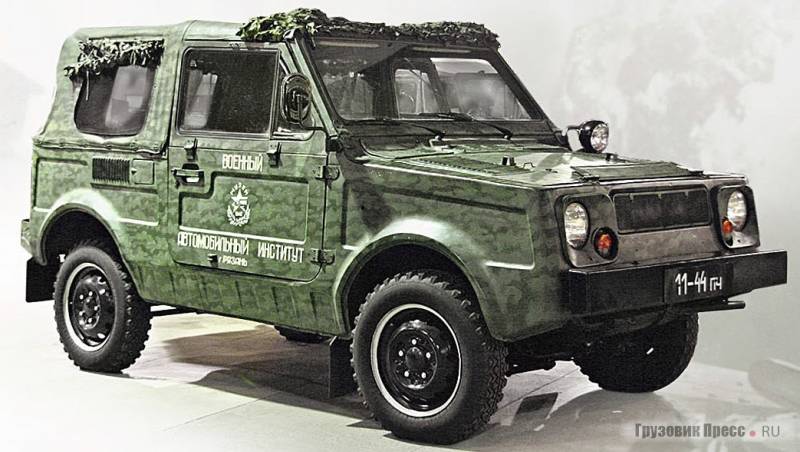
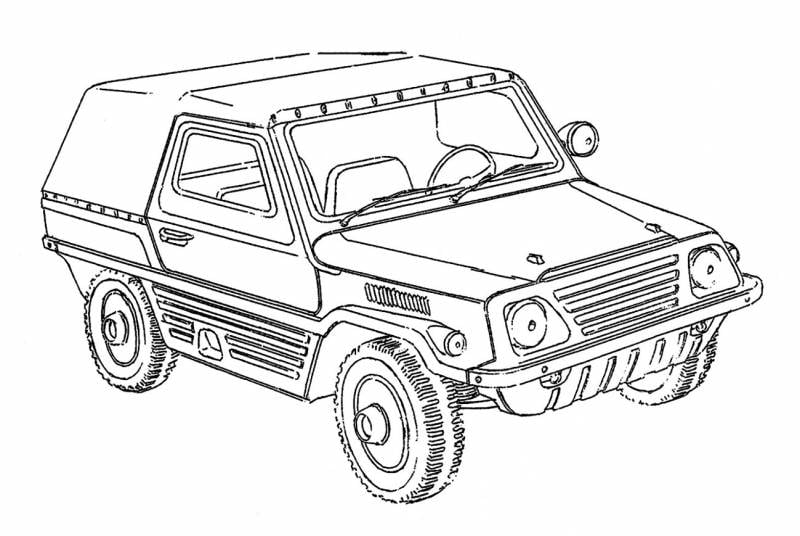
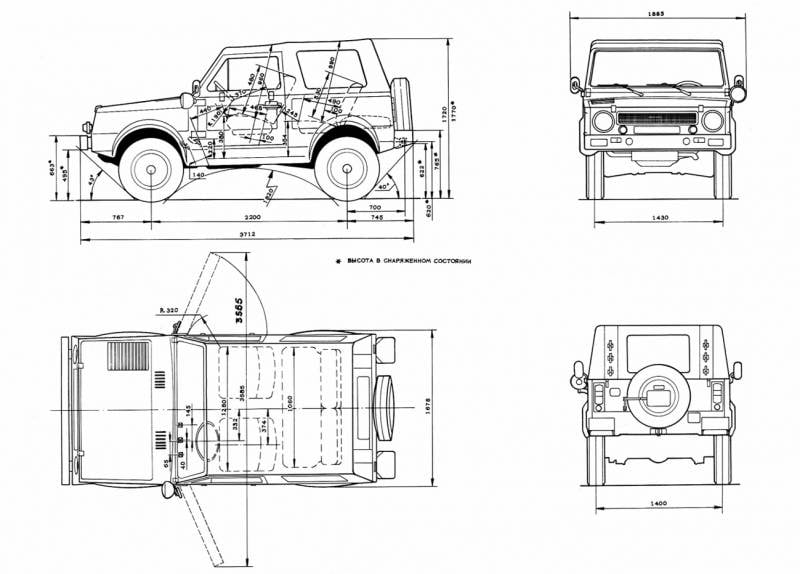
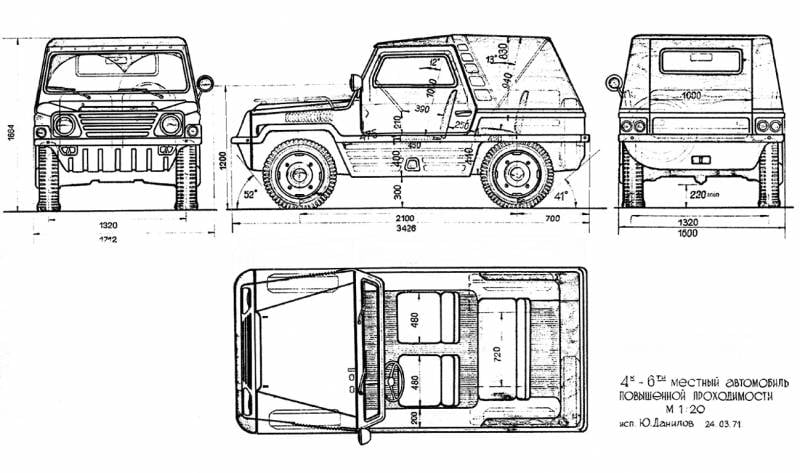
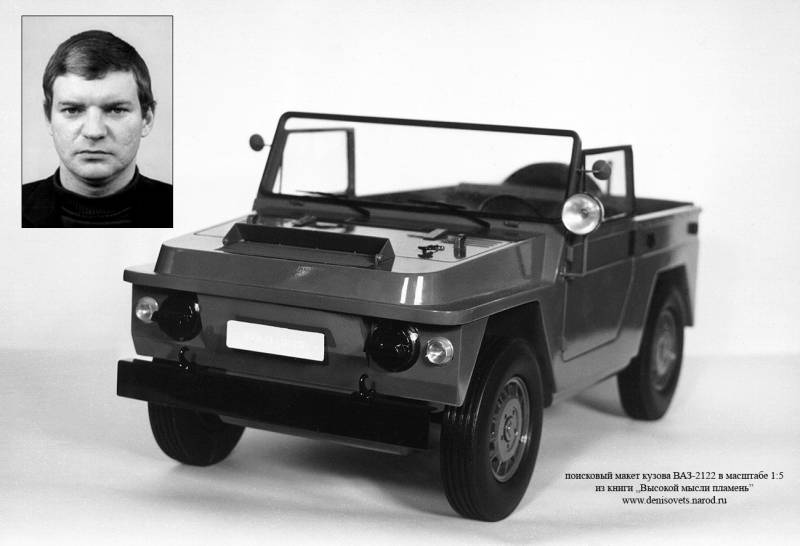
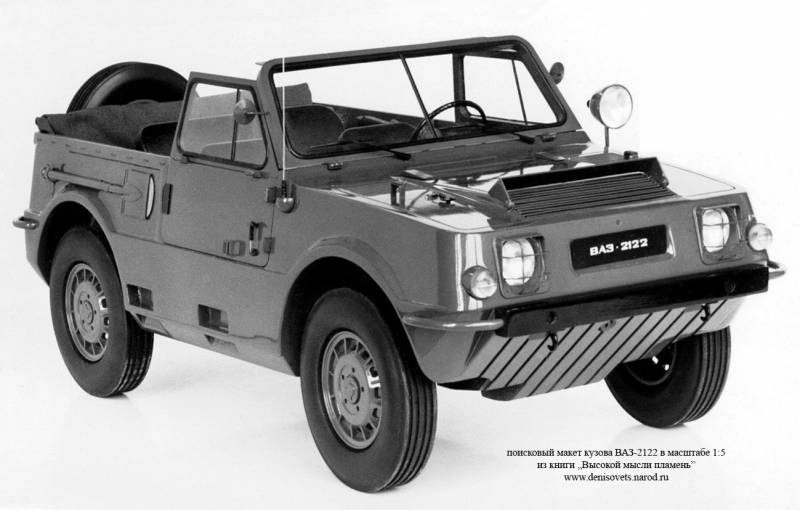
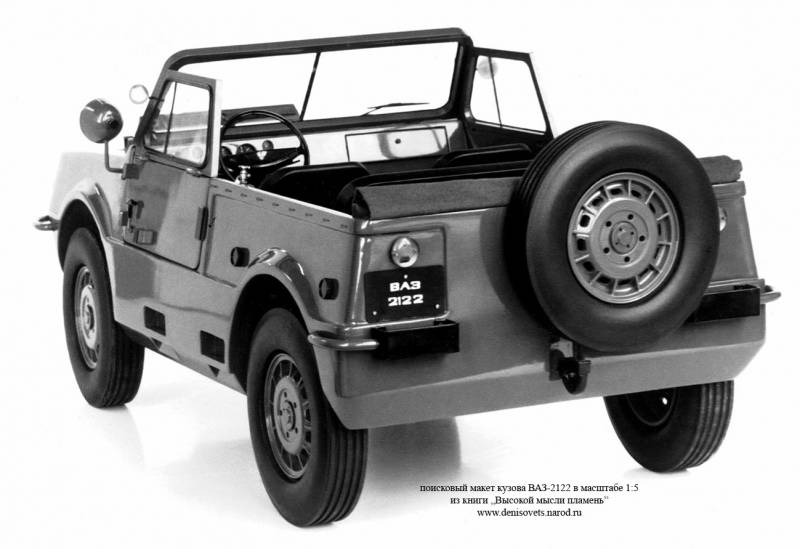
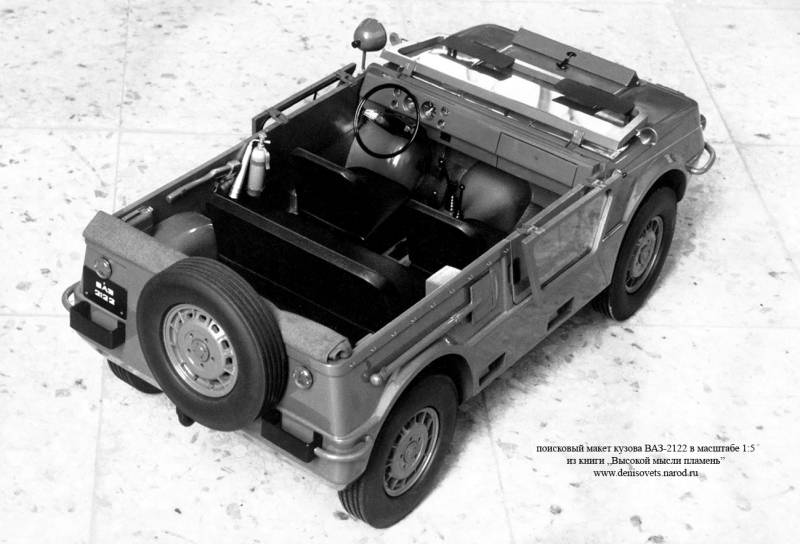
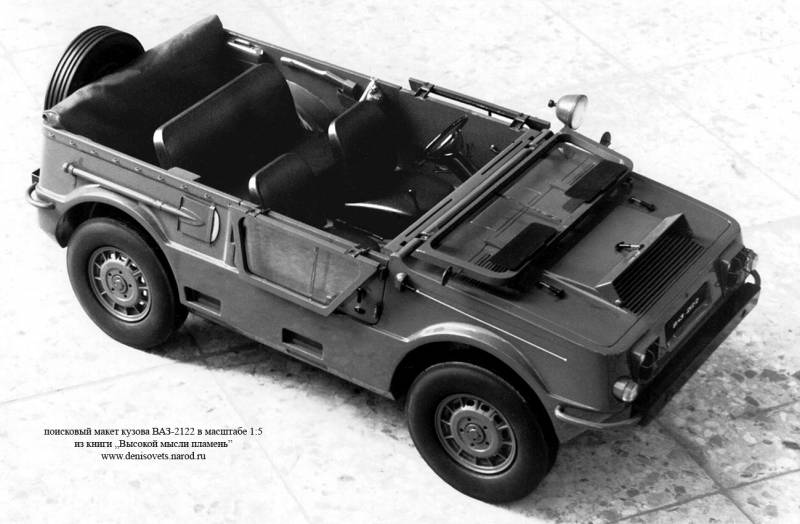
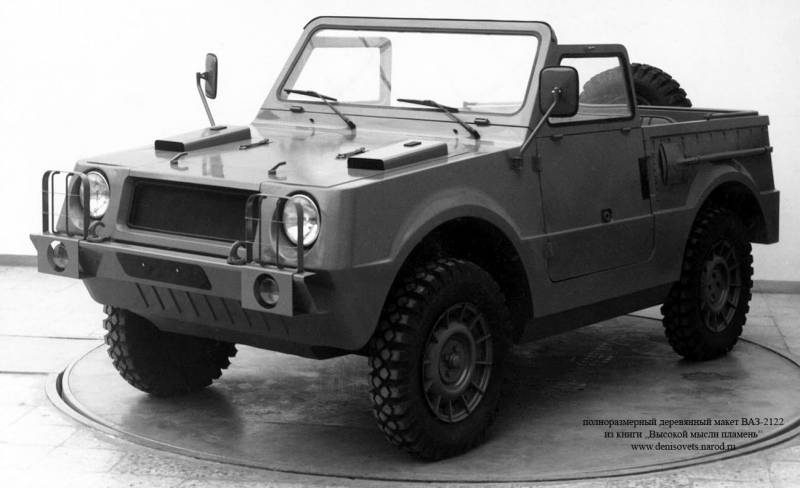
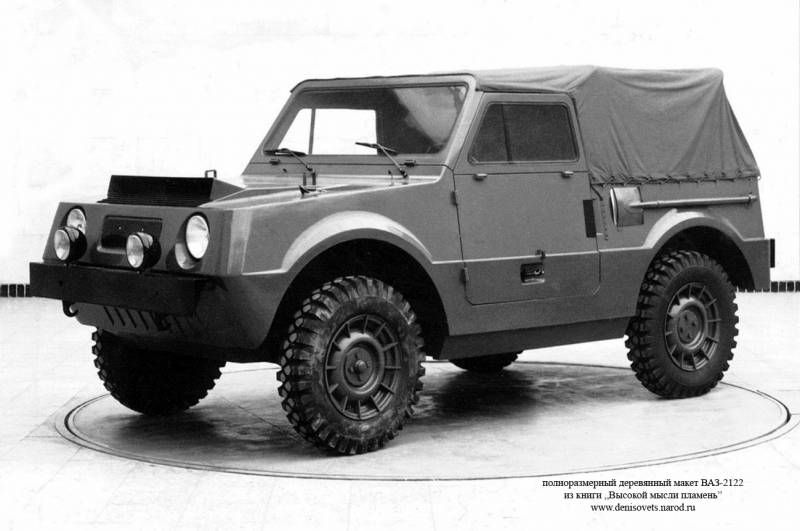
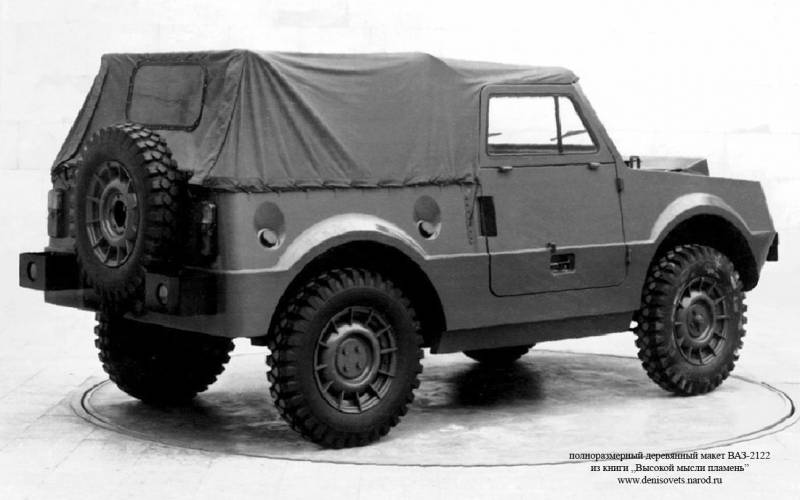
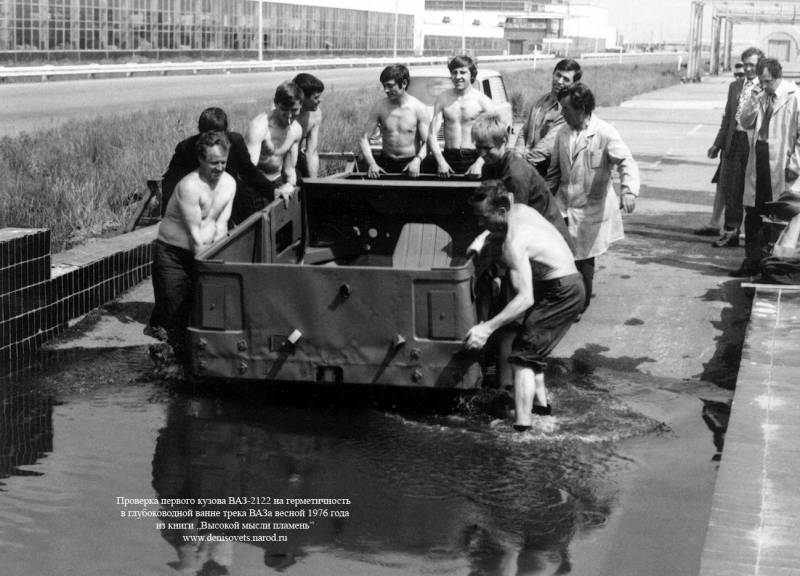
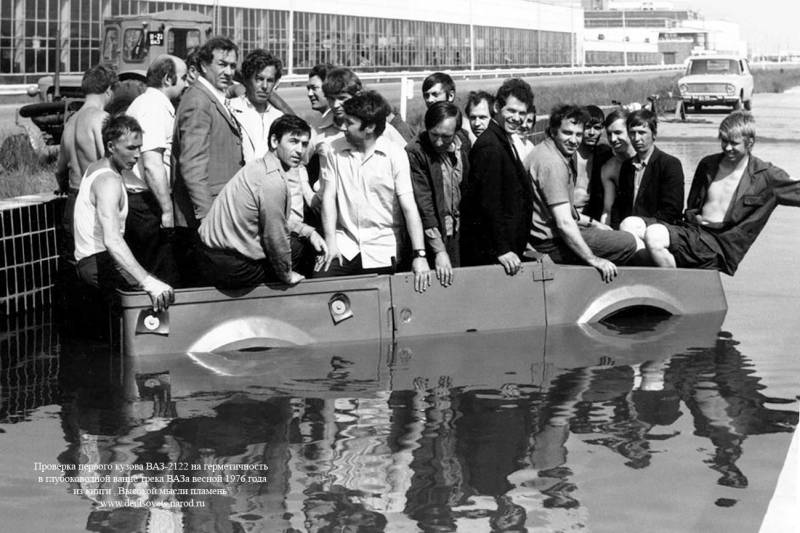
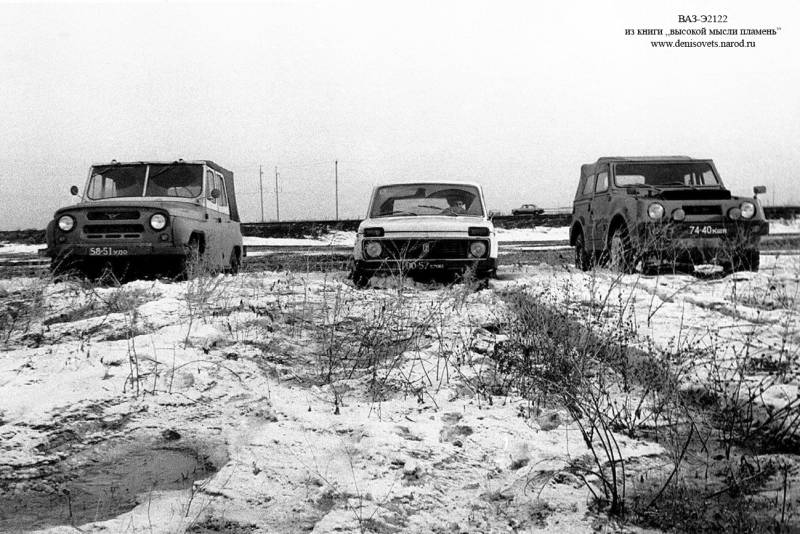
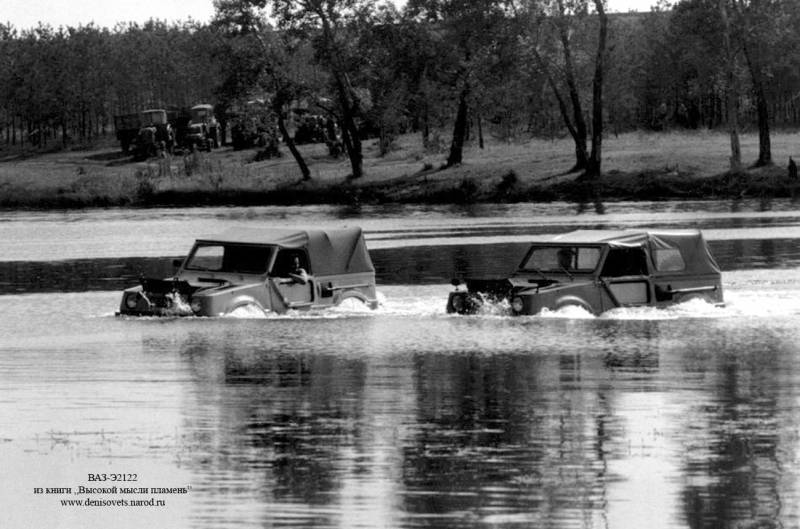
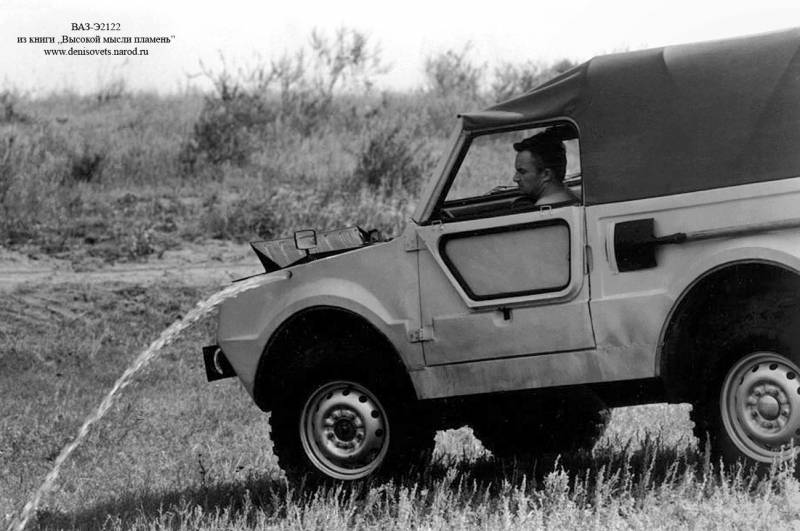
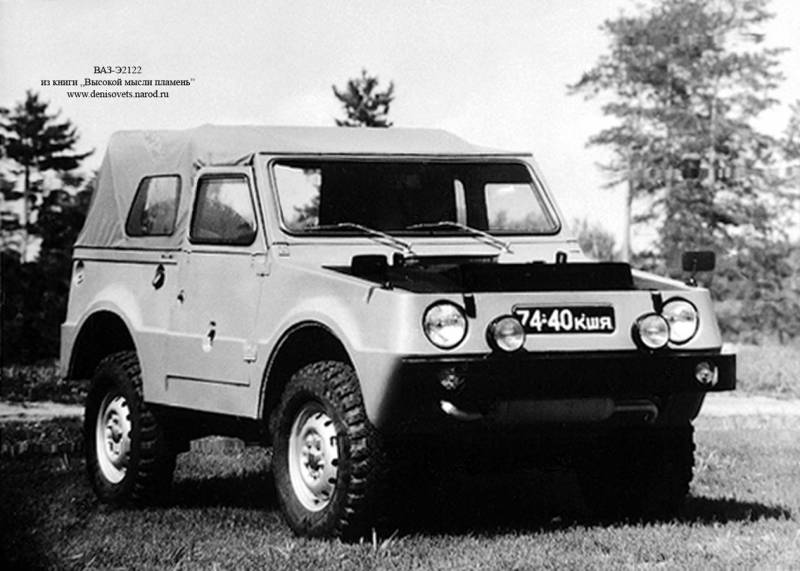
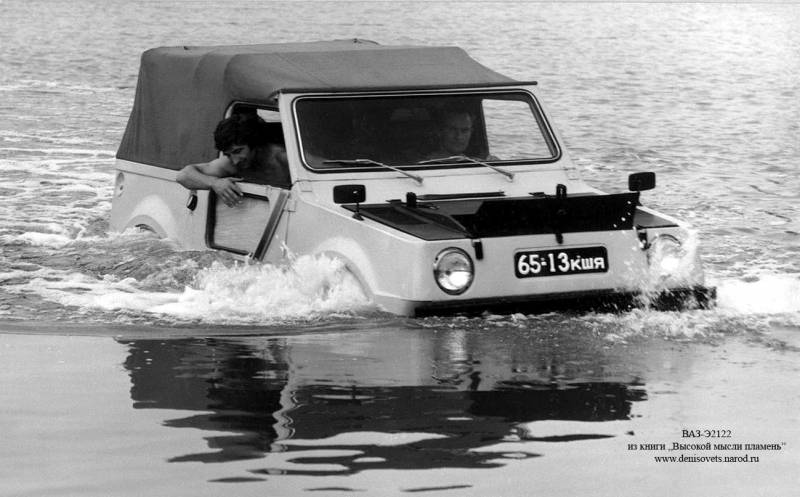
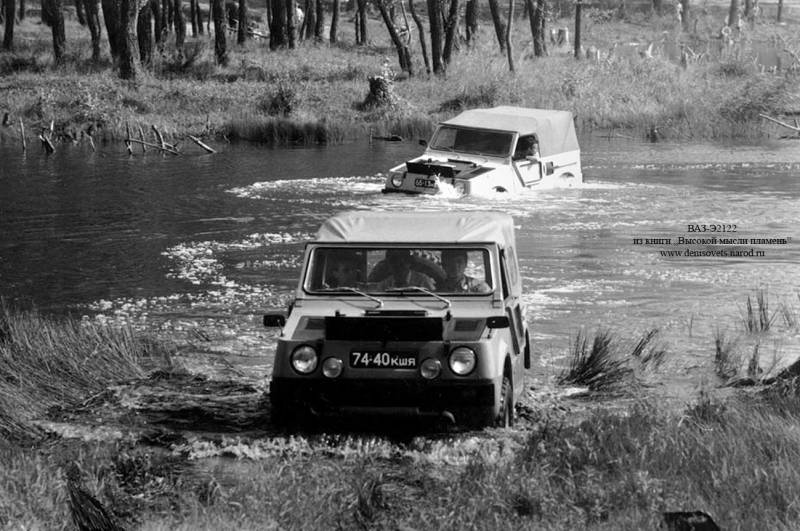
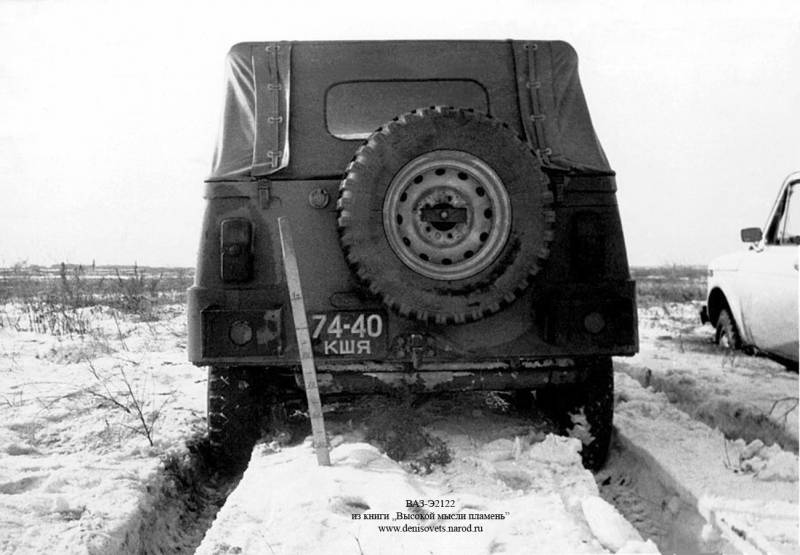
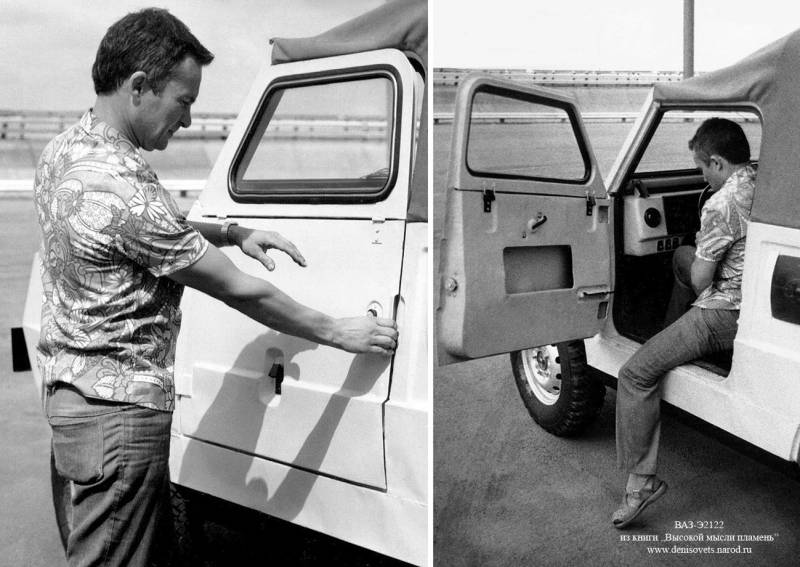
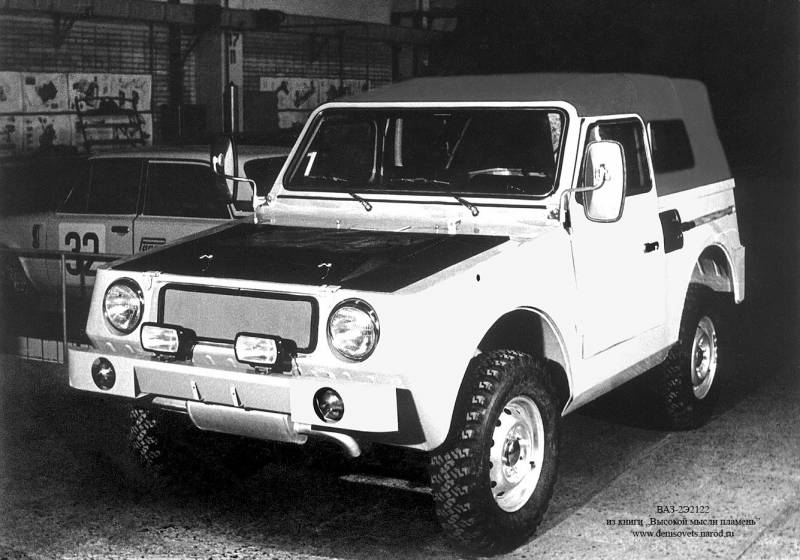
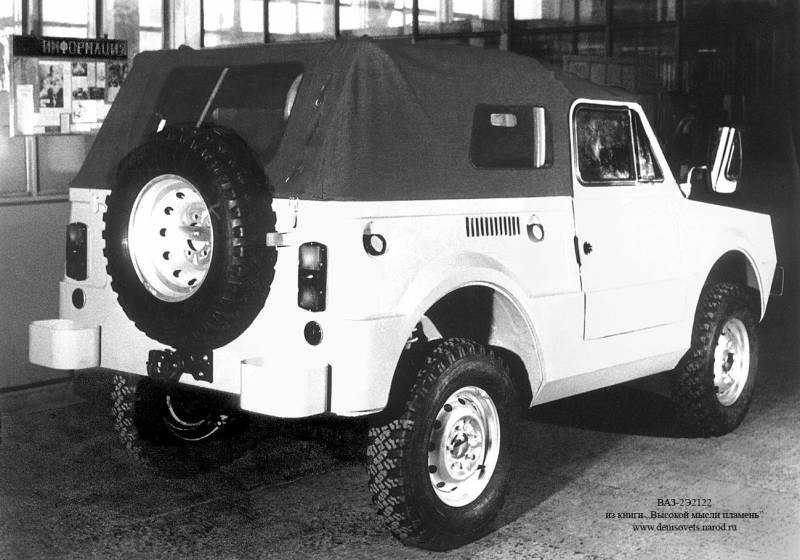
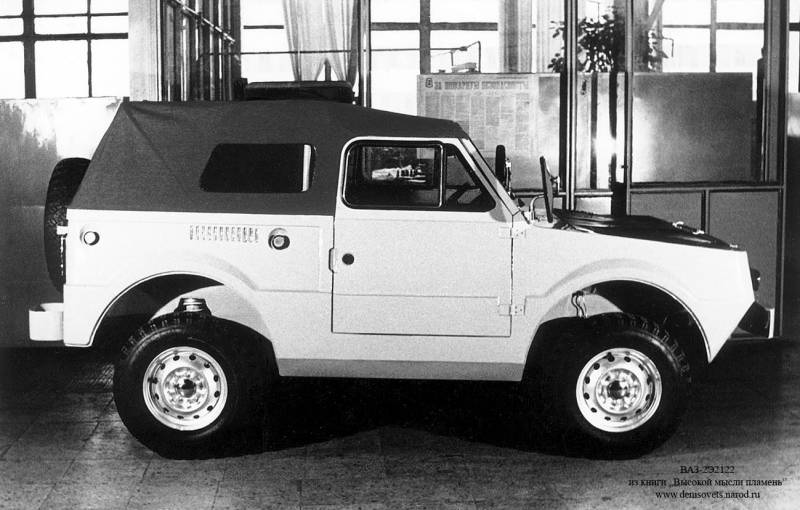
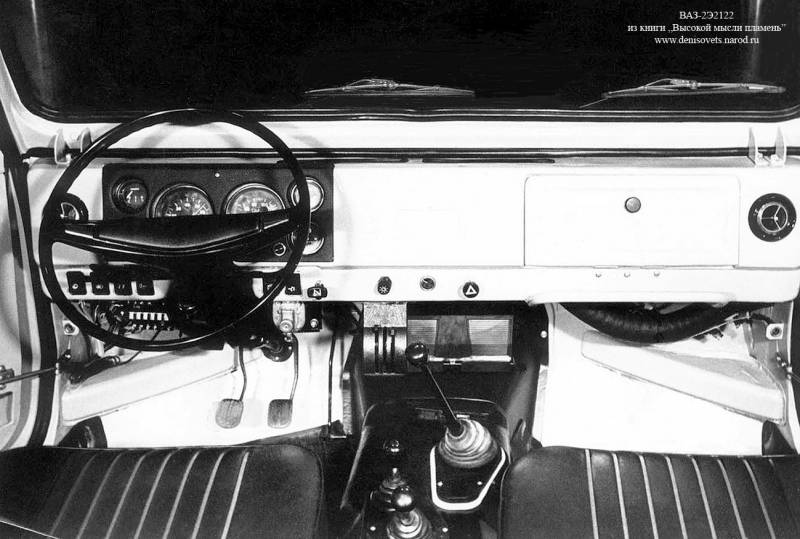
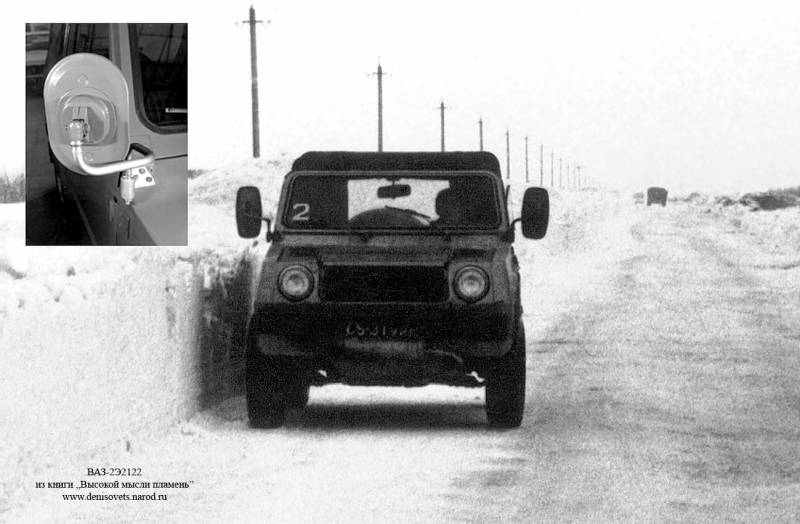
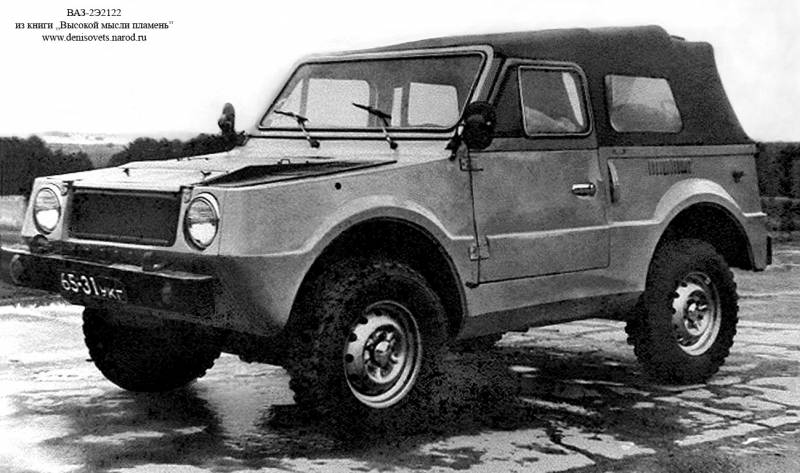
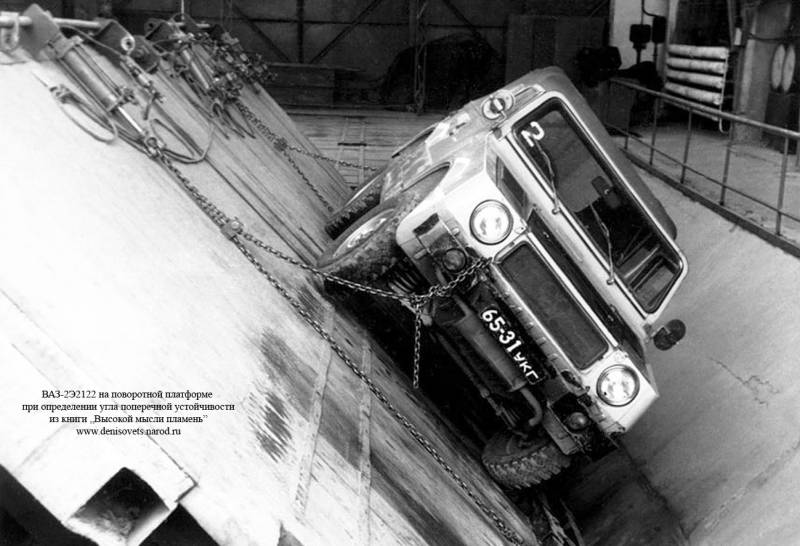
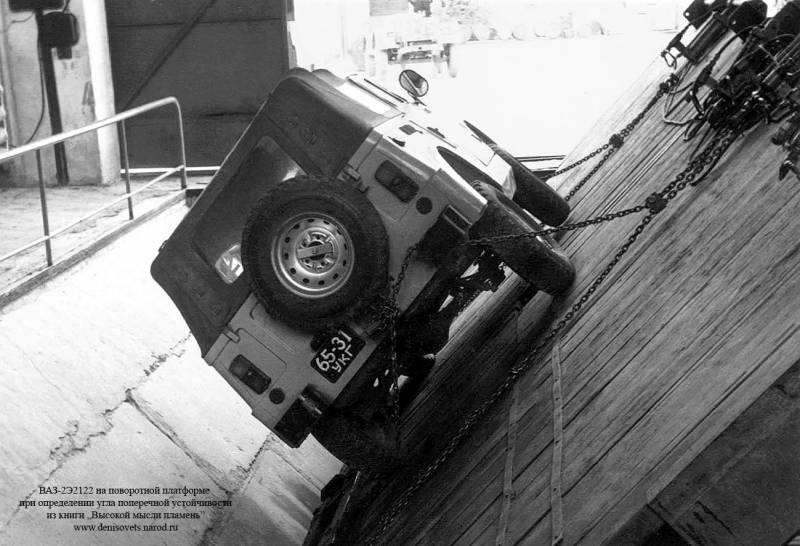
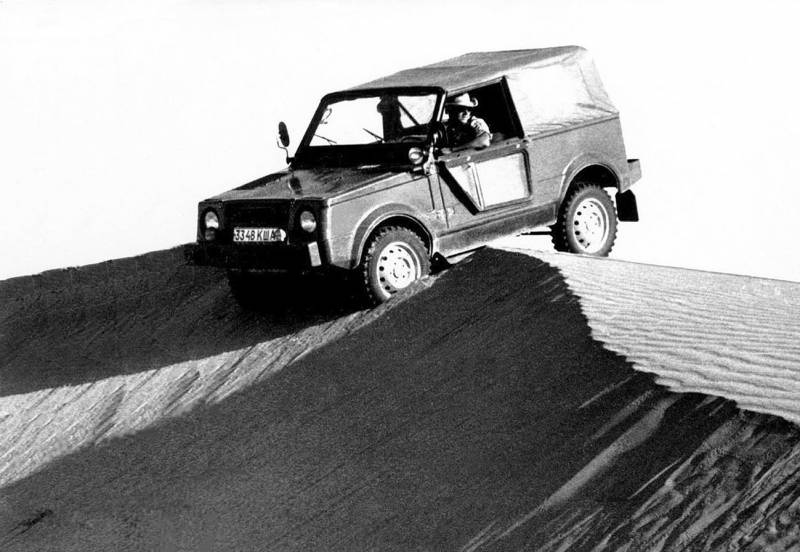
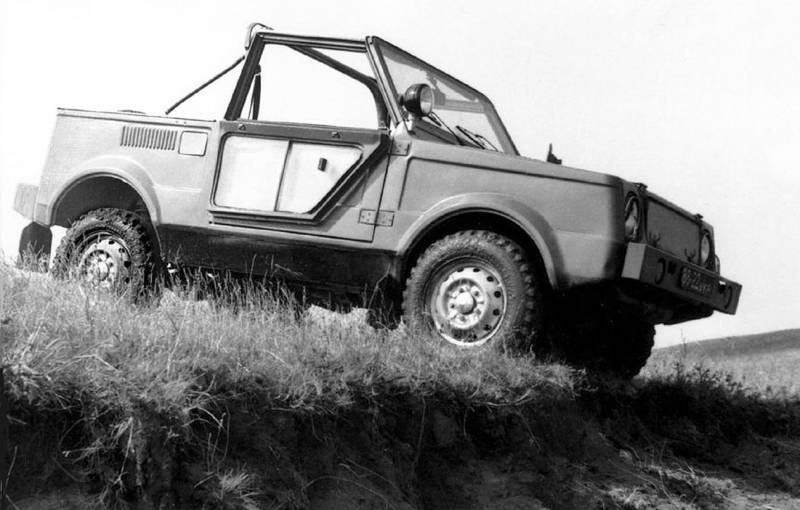
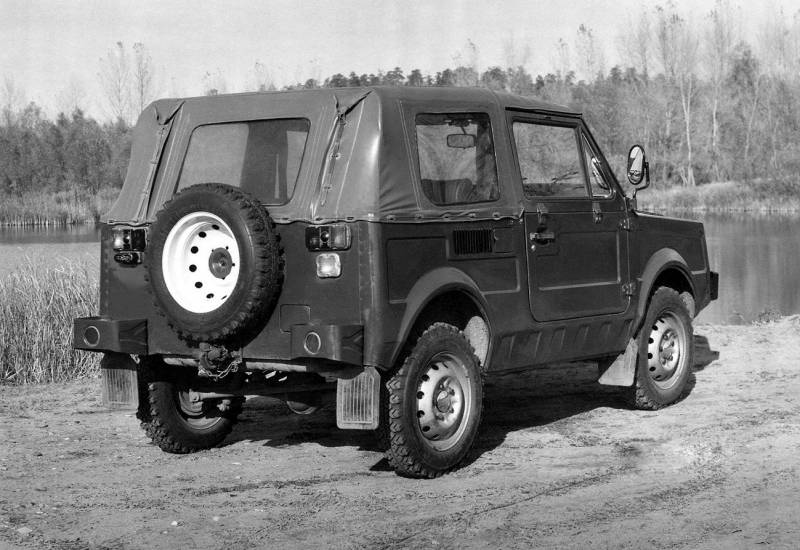
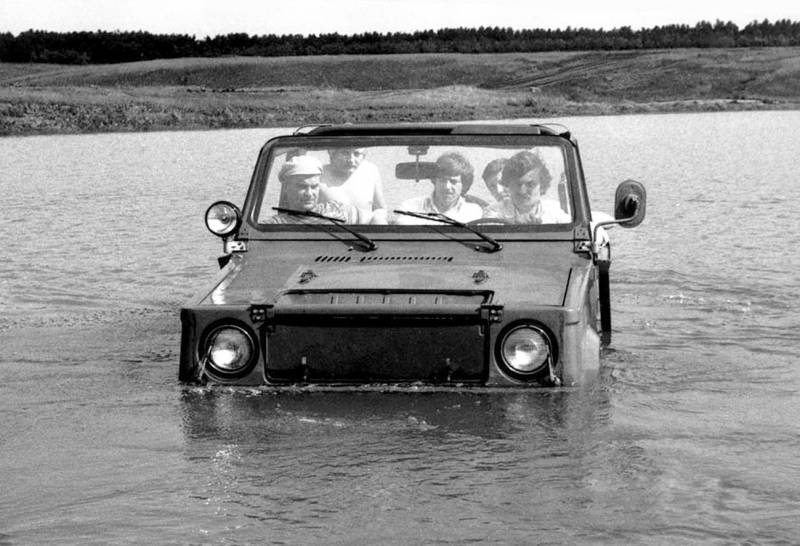
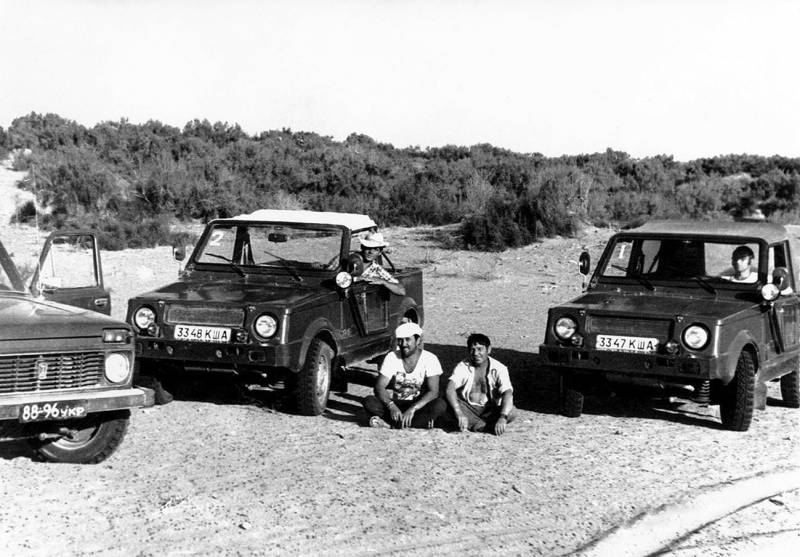
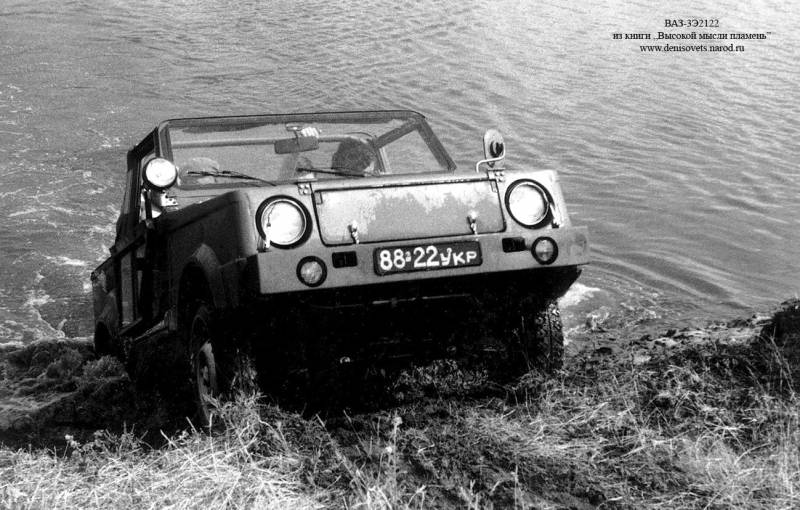
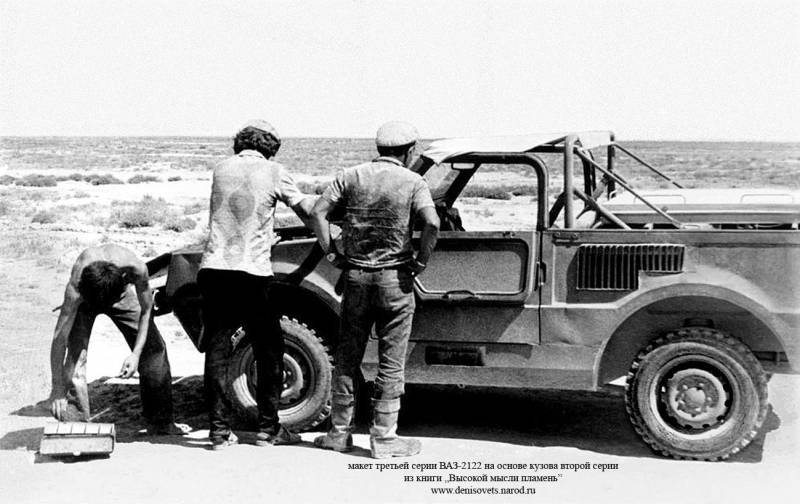
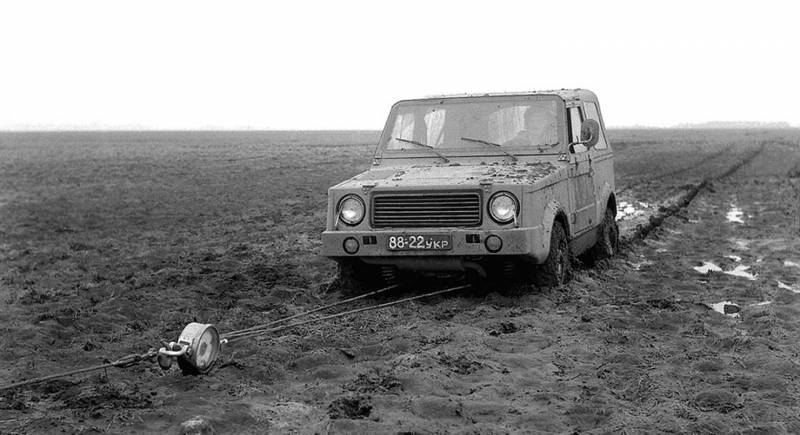
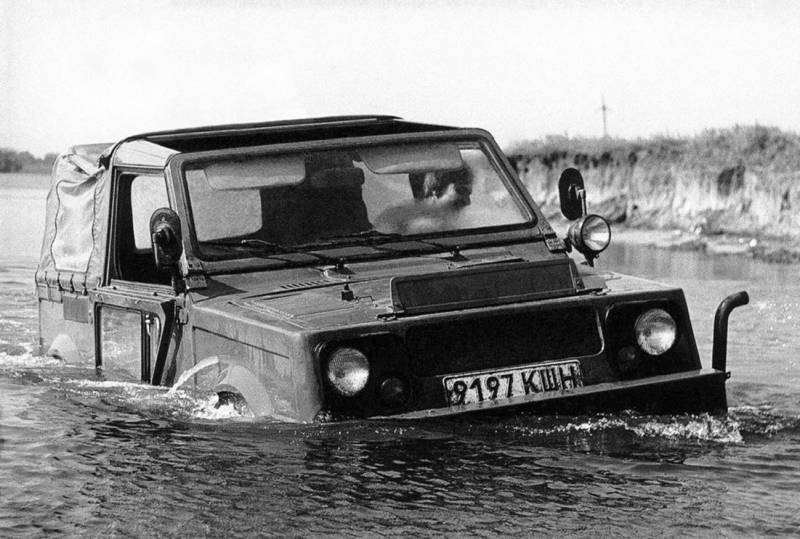
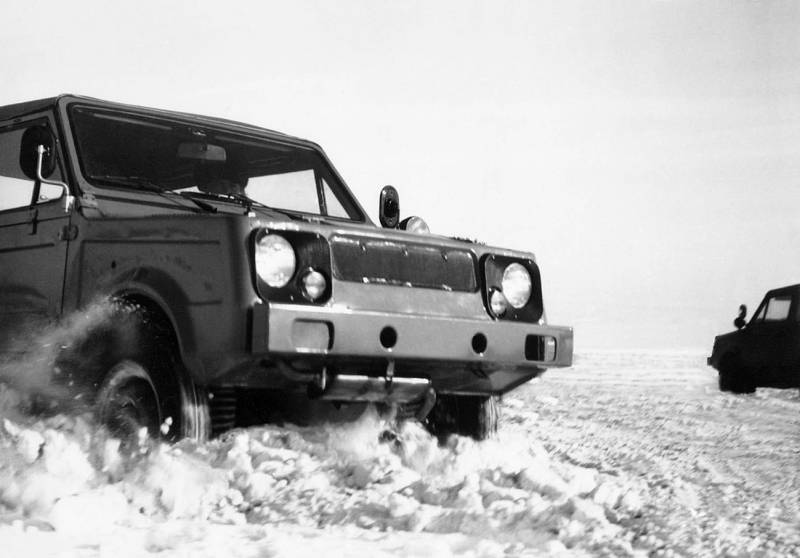
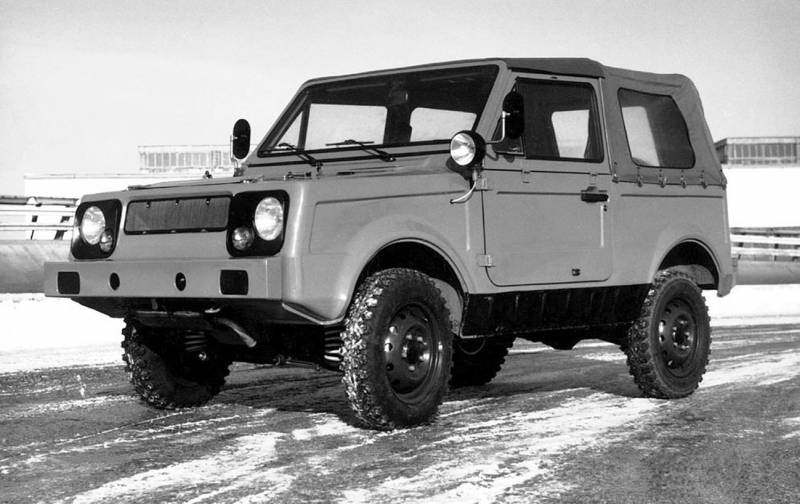
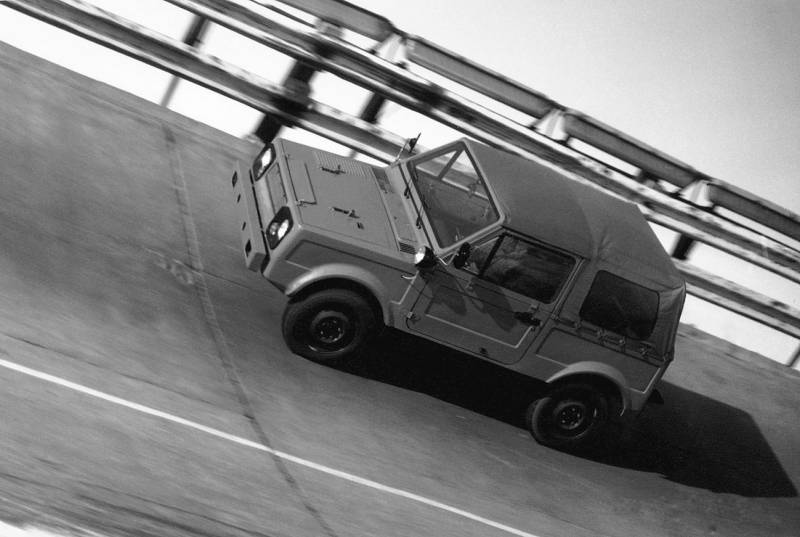
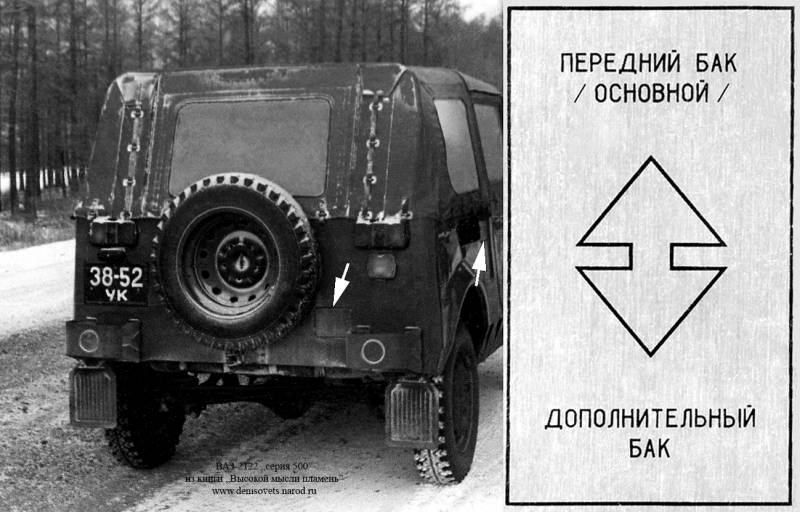
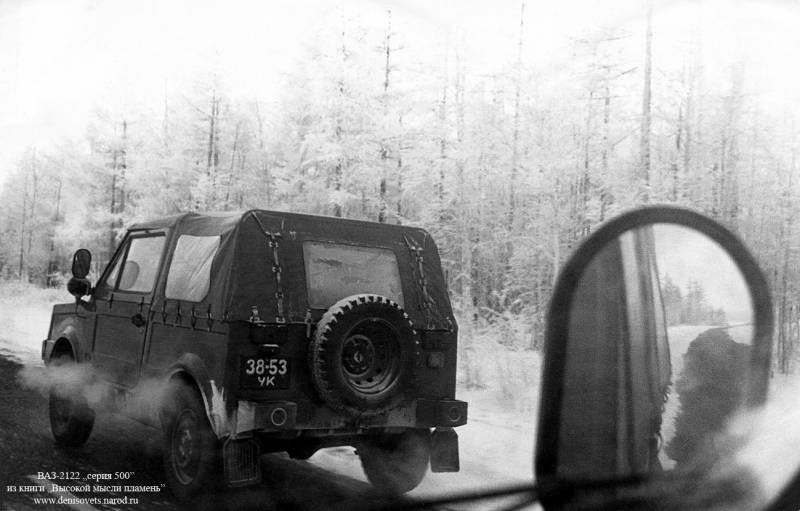
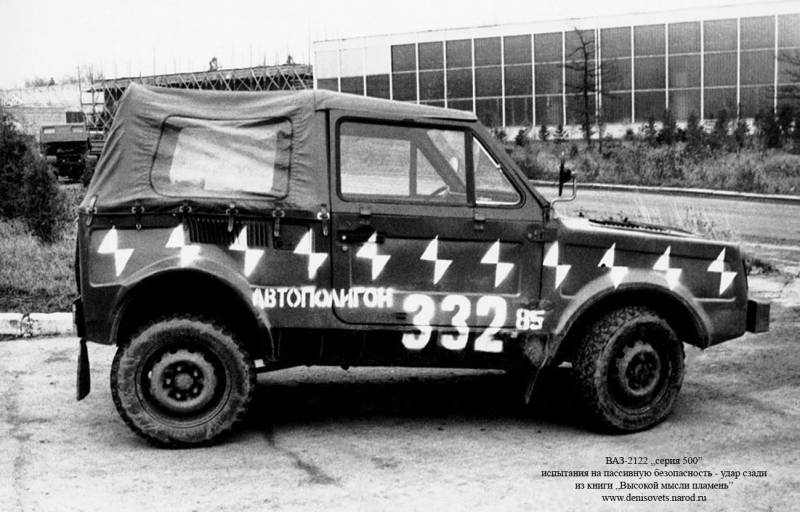
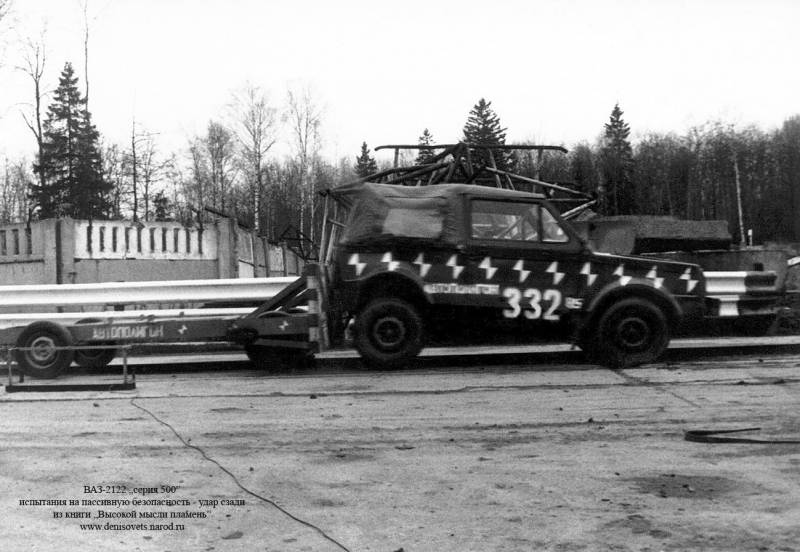
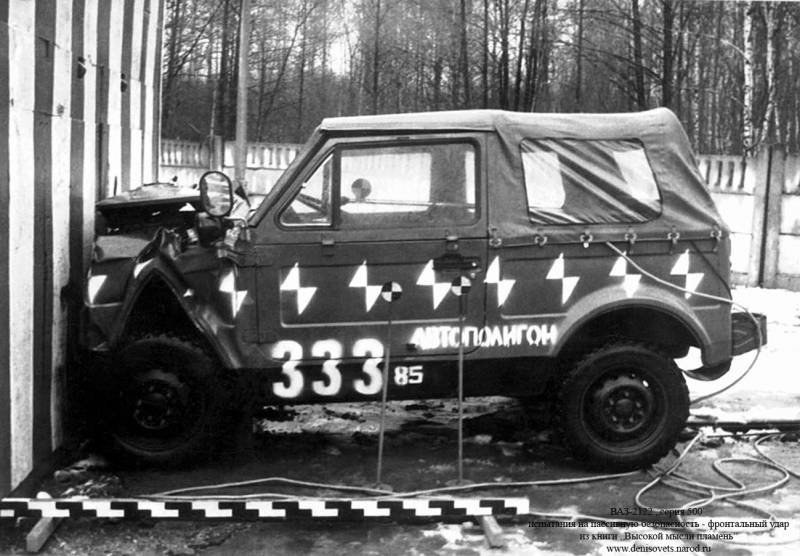
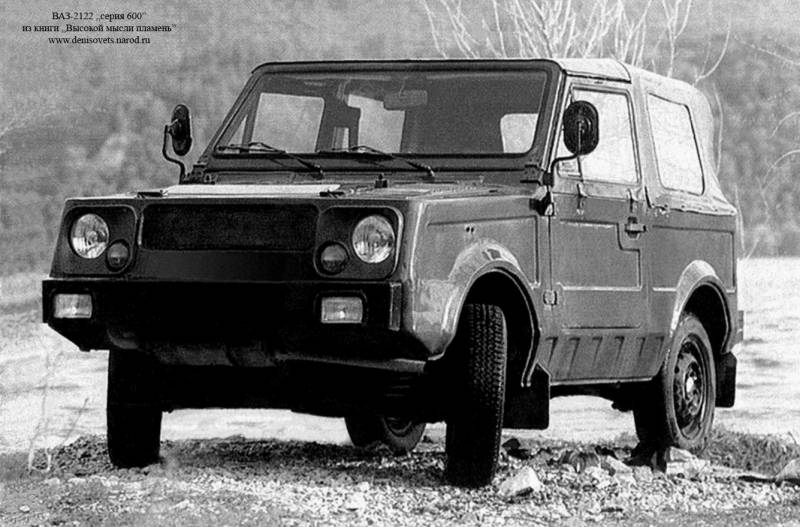
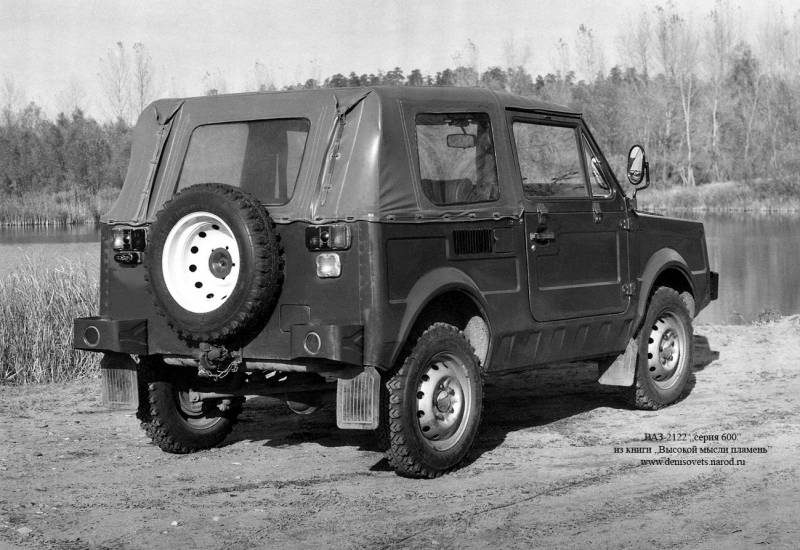
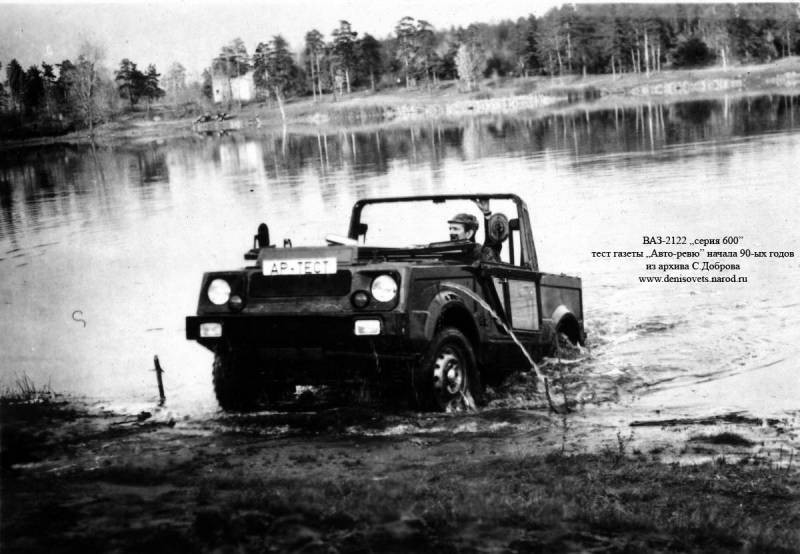
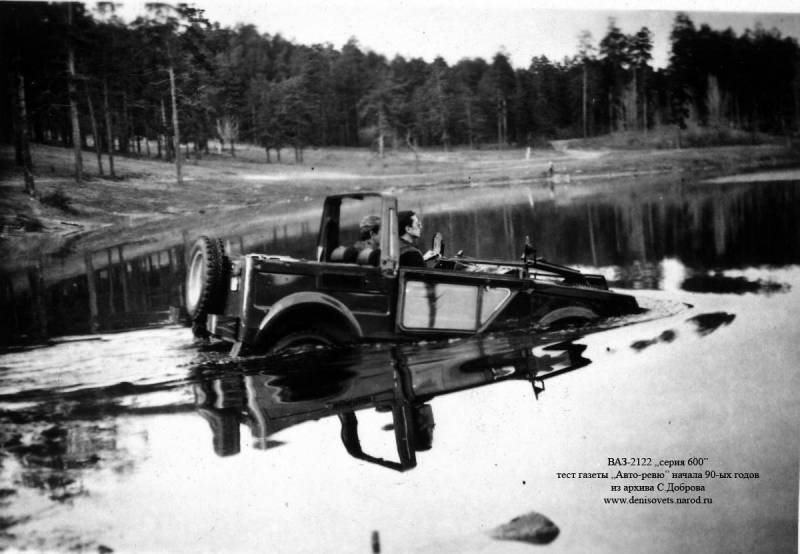
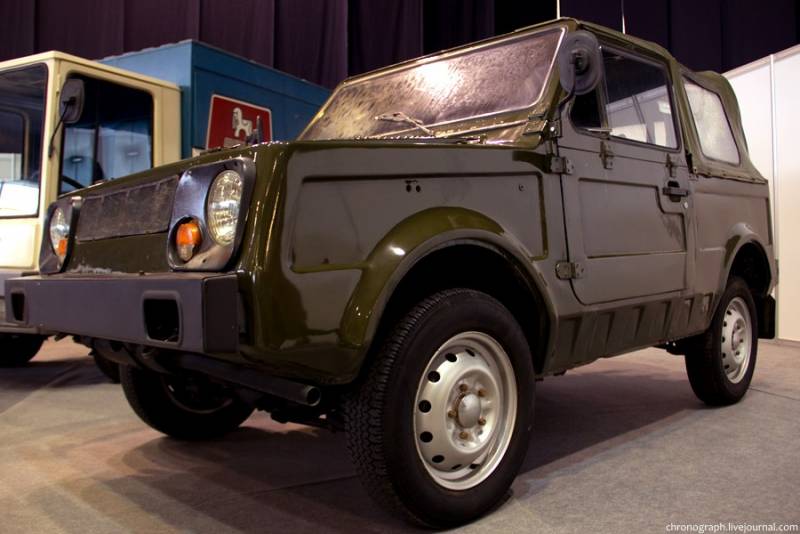
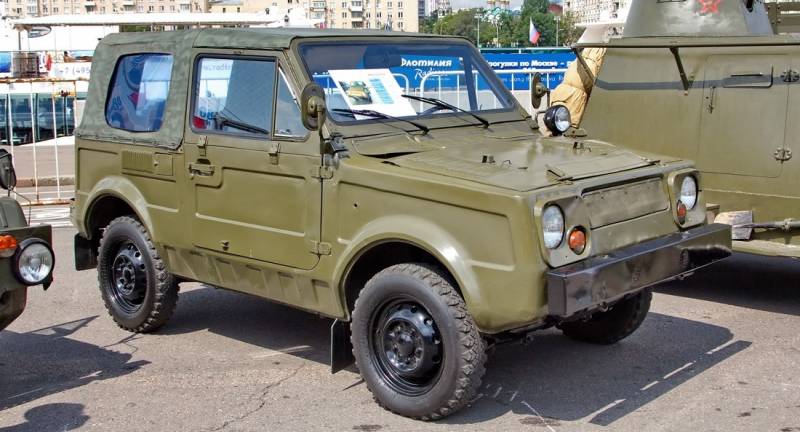
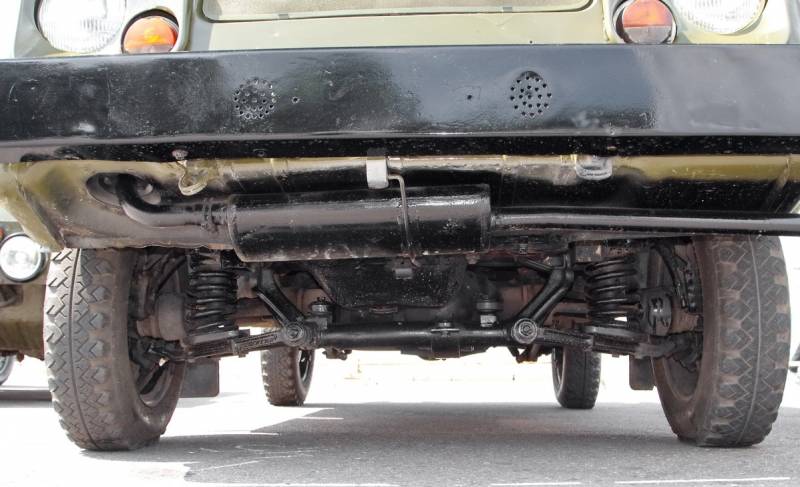
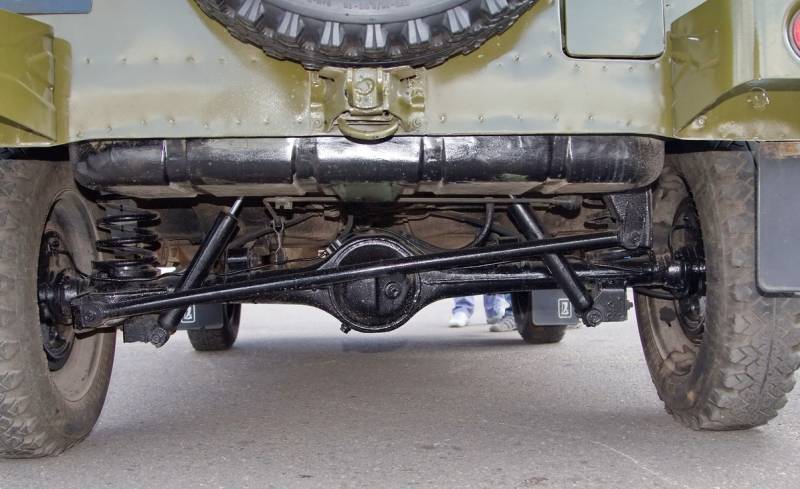
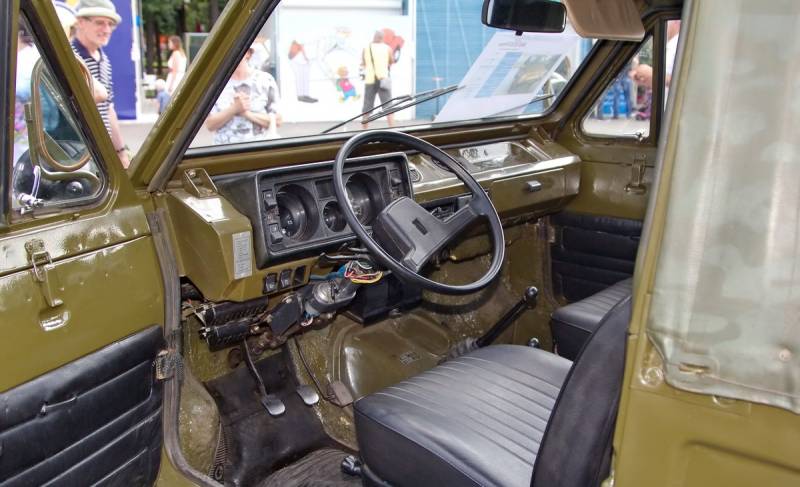
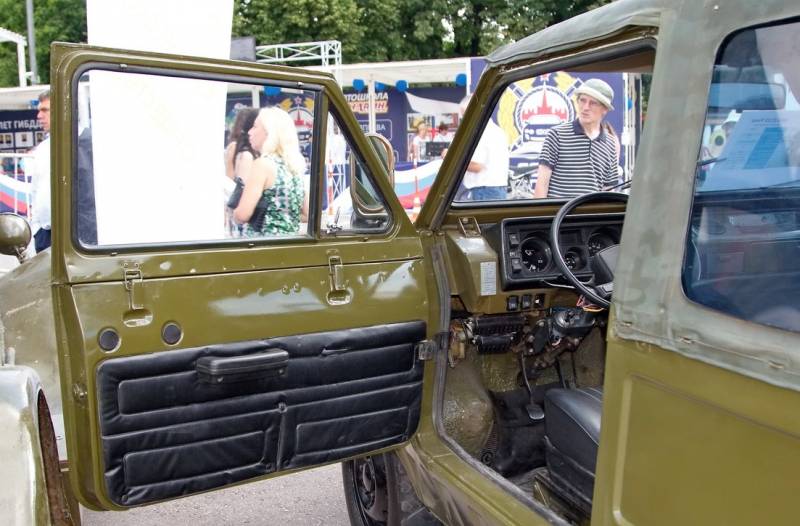
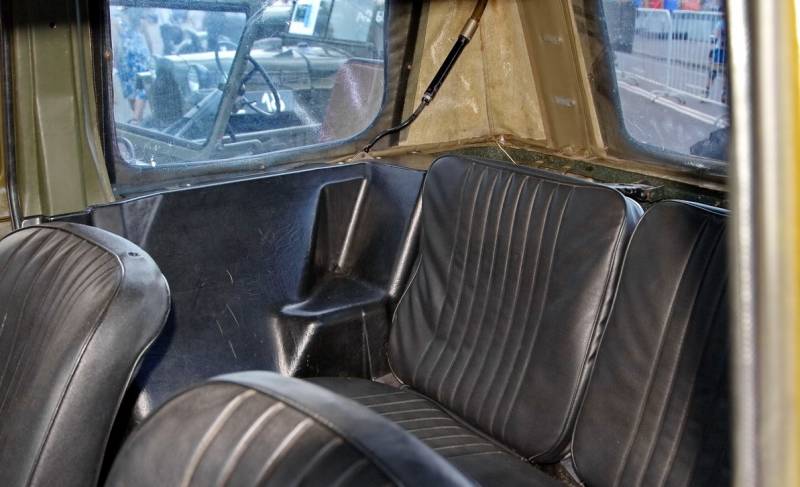
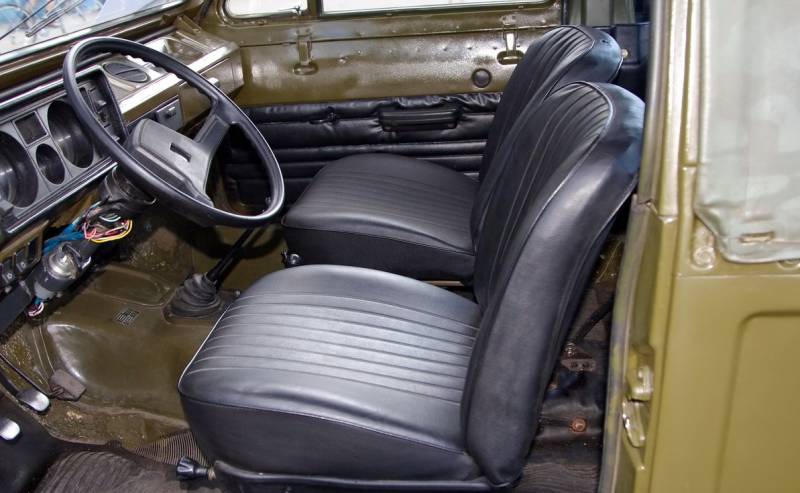
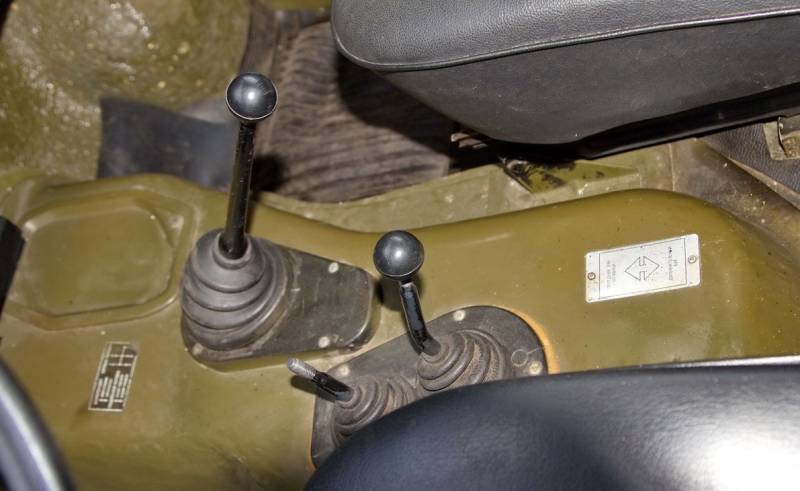
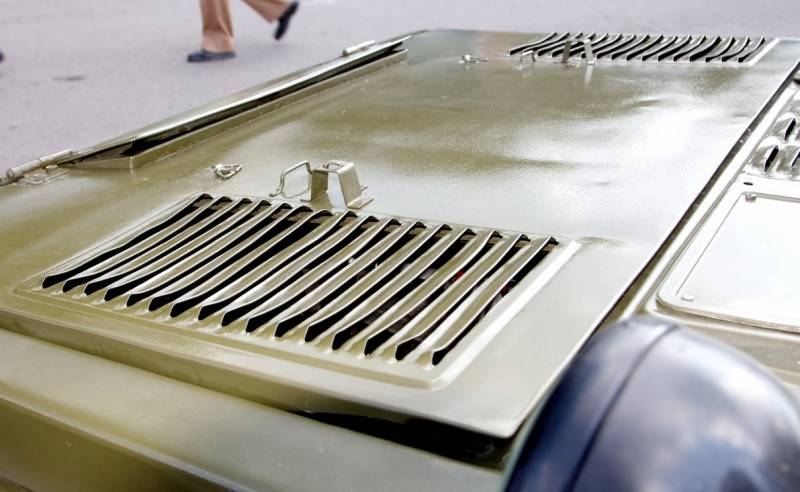
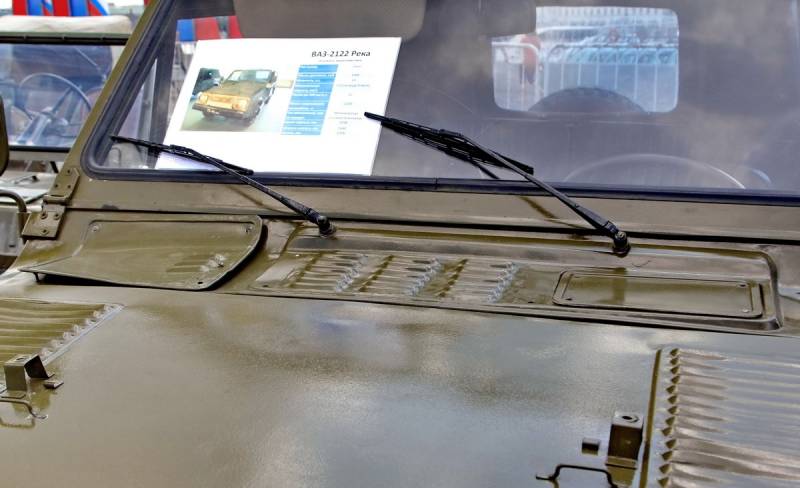
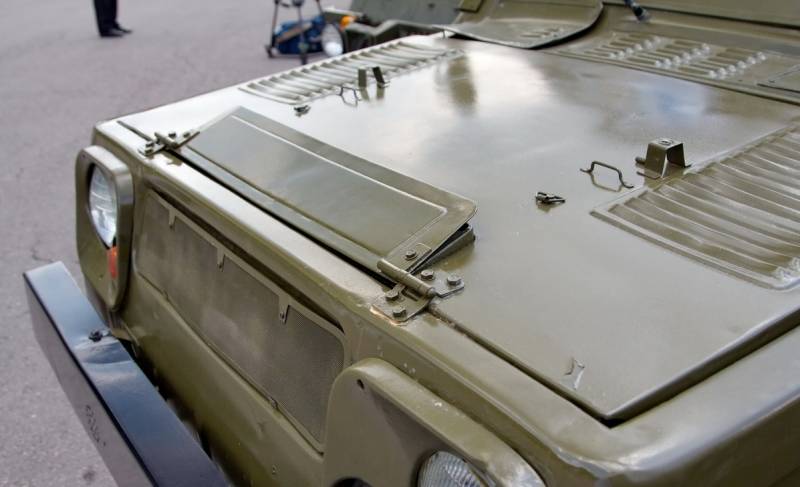
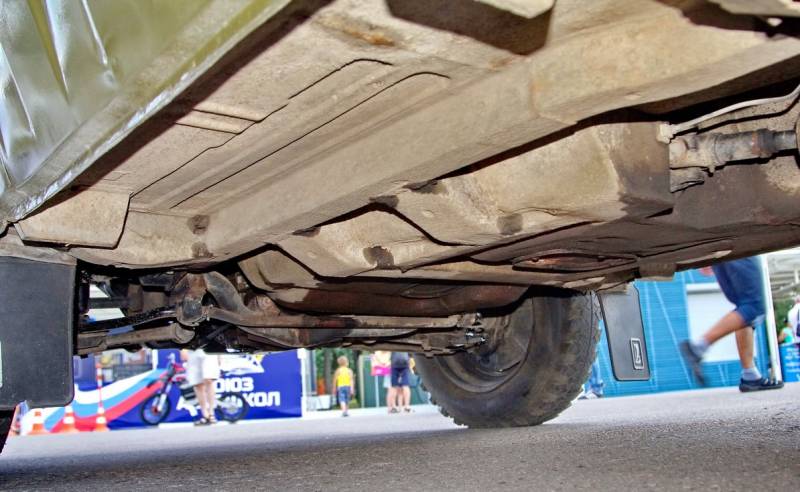

Information